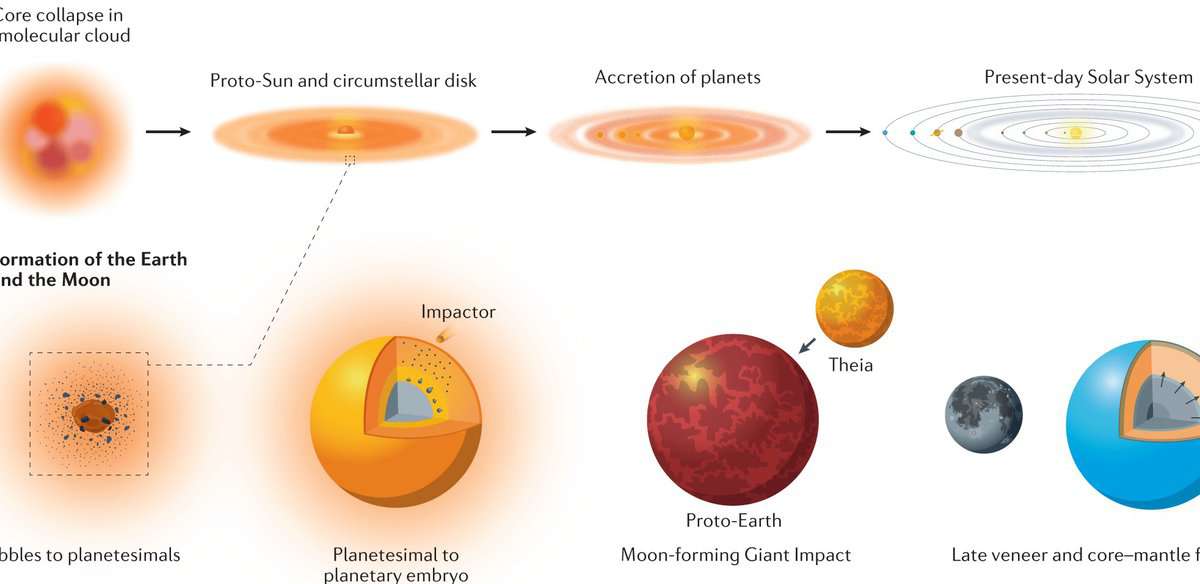Accretion is a fascinating phenomenon that occurs in stars of various sizes, ranging from red dwarfs to blue supergiants. It refers to the gradual accumulation of matter, which ultimately shapes these celestial bodies into their characteristic spherical form.
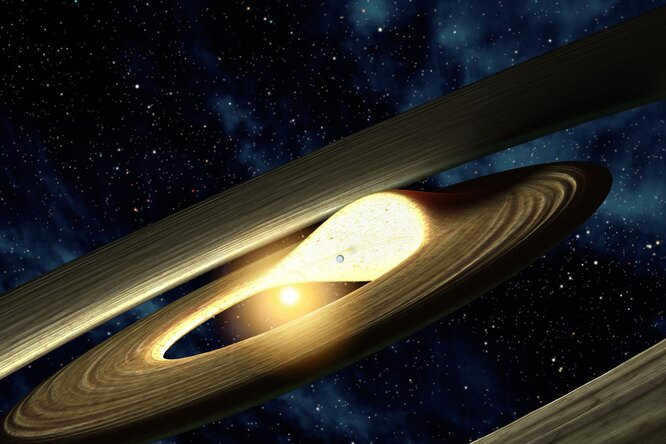
However, there exist numerous celestial objects that fit the bill. These objects are known as accretion disks. Similar to humans, stars also prefer to form pairs, known as binary systems. In fact, the phenomenon of binary systems is so prevalent that the renowned American astronomer Cecilia Payne-Gapochkin, who was the first to establish that the majority of the universe is composed of hydrogen, once humorously remarked that three out of every two randomly chosen stars are part of a binary system.
Get away to a nearby place
Let’s start by focusing on binary systems that consist of normal main-sequence stars, which burn hydrogen, orbiting around a single center of inertia, to ensure certainty. What is the typical mechanism of transferring matter within a stellar pair that is close enough? In most cases, both stars are formed from the same molecular cloud, meaning they have the same composition but different initial masses. The heavier star will be the first to deplete its hydrogen reserves, lose stability, expand in size significantly, and transform into a red giant. During this time, it can not only fill its Roche cavity but also extend beyond it. In this scenario, the star’s center will no longer be able to retain the matter of the inflated shell through gravity, causing the star to lose matter. A considerable amount of this gas will pass through the neck connecting the Roche cavities and become gravitationally captured by the companion star. As the donor star thins out, its Roche cavity will shrink, causing the rate of matter leakage to increase over time. Even when the masses of the stars become equalized, the leakage will only slow down rather than completely stop.
These changes carry various outcomes, and astronomers still lack the knowledge to accurately simulate them. However, it is certain that some of the expelled material forms complete orbits around the binary star system. Frequently, this material takes the form of a flat, spinning disk known as an excretion disk. Under certain conditions, the binary star system may even submerge itself within a spherical gas cloud produced by the plasma that has escaped into space. Simultaneously, each star has the opportunity to acquire its own smaller and denser disk – an accretion disk (accretio, “accretion”). There are also more extraordinary possibilities (such as stellar collisions and mergers or the consumption of a neighboring star by a larger star), but we will not explore such uncharted territories.
Up to this point, we have been discussing the usual pairs of stars, but in order for accretion to occur, it is sufficient for one partner to possess a gas shell that can expand and escape through the neck of the Roche cavity. As a result, accretion can also take place when a binary system combines a regular star with a body made of degenerate matter, such as a white dwarf, a neutron star, or even a black hole (in fact, accretion disks were initially discovered when observing white dwarfs accompanied by regular stars). Furthermore, it is these particular accretion processes that yield the most impressive outcomes. Two notable examples are the Type Ia supernova explosion, which is caused by prolonged accretion onto the surface of a white dwarf that is nearing its upper mass limit, and the formation of an X-ray pulsar, which is caused by accretion onto a highly magnetized neutron star. Nevertheless, accretion disks in regular binary star systems are more common, simply because there are a greater number of such pairs.
It is also possible for individual celestial objects to act as centers for accretion. When a body is surrounded by a gas or gas-dust medium, its particles are attracted to it and can either collide with its surface or form an accretion disk. This process is commonly observed in young stars that have recently formed from gas-dust clouds. However, the most fascinating phenomena are still observed in accretion disks that form in close binary systems.
Roche cavities
Each star is encompassed by a region of space that is dominated by its own gravitational pull rather than that of its neighboring star. The extent of this region, naturally, is determined by the mass of the star. If these regions intersect with the plane in which both stars orbit, a shape resembling a figure eight will emerge – two loops elongated in a line with a single shared point on the line connecting the centers of the stars (to better understand, we will need to freeze time, as this figure is in motion). At this particular point, each star exerts an equal gravitational pull in opposite directions, resulting in a total gravitational vector of zero. This point is known as the first Lagrange point, although it was actually discovered twenty years earlier by Leonard Euler.
Edouard Roche, a French astronomer and mathematician of the XIX century, mathematically described the space bubbles that are now known as Roche cavities. Inside these cavities, cosmic particles are limited to orbiting only around the star that the cavity encloses. According to the same theory, matter can transfer between stars through the narrow channel that connects the cavities, specifically through the vicinity of the first Lagrangian point. Matter located outside the cavities can stably orbit around the pair of stars as a whole; however, its paths are not constrained to encircle a single star.
The friction holds all the power
The particles contained within it possess varying velocities, which, in accordance with Kepler’s third law, increase as they draw closer to the central celestial body (hence why Mercury orbits the Sun at a faster rate compared to Earth). Consequently, internal friction accumulates within the substance of the disk, thereby diminishing the kinetic energy of the particles and causing them to traverse along spiral trajectories. Over time, certain particles eventually descend onto the surface of the attracting entity, whether it be the atmosphere of a standard star, the solid outer layer of a neutron star, or the event horizon of a black hole. Thus, the disk perpetually sheds matter, while simultaneously acquiring new matter from the donor star.
When the matter in a disk is subjected to friction, it heats up and produces electromagnetic radiation. This causes the disk to become a luminous object, similar to a flat star. In the inner zone of the disk, the temperature can reach tens of millions of degrees, resulting in the generation of X-ray quanta. This phenomenon is observed in disks that surround neutron stars and stellar-mass black holes. The central zone of these disks emits ultraviolet light, while the outer zone, which has a temperature similar to that of the sun’s surface, emits visible rays. On the other hand, disks around white dwarfs have a maximum temperature of 20,000 degrees Celsius and their spectrum does not extend beyond the ultraviolet range. The coldest accretion disks, found around protostars and young stars, only emit infrared radiation. Therefore, flat stars are not inferior to regular stars when it comes to the range of radiation they emit.
The concept of generating heat in the disk through friction (friction-driven) may seem straightforward and logical, but it is deceptively complex. This phenomenon cannot be attributed solely to the collision of gas molecules, as the temperatures within the disk would be significantly lower than what is observed in reality. While the underlying mechanisms are only partially understood, it is often said that the devil is in the details. A prominent theory gaining traction suggests that heat is generated through the emergence of magnetic-rotational instability, which involves turbulent vortex flows intertwined with magnetic fields. Whether this theory holds true is yet to be determined.
Living and radiant
Nonetheless, the disk’s temperature is additionally influenced by its density, which is connected to the speed at which matter arrives from the companion star. If the matter is supplied to the disk in sufficient quantity, its density increases, causing the disk to gradually lose its transparency and retain heat more effectively. As the temperature rises, the transparency further diminishes, further promoting an increase in temperature. The matter becomes extremely hot and starts emitting intense light, releasing an increasing number of short-wave photons. The disk becomes as bright as a variable star, rapidly escalating in luminosity to the maximum extent permitted by natural laws.
And then friction once again enters the picture. It reaches such a high level that it decelerates the molecules on the outer portion of the accretion disk. As a result, they lose velocity and migrate towards the center of the disk, causing the peripheral region to become less dense and therefore more transparent to radiation. This process then reverses – the disk releases heat from its outer edge, cools down, becomes more transparent, and subsequently cools down even further. Eventually, the temperature of the entire disk decreases to such an extent that it only emits infrared radiation. While the accretion from the donor star continues, the disk starts to heat up again – and the cycle repeats. Of course, these cycles vary for different disks, depending on the specific conditions. The duration of the cold phase can vary greatly, ranging from weeks to several decades. During this phase, the disk is essentially invisible, except when observed persistently with infrared equipment. On the other hand, the duration of the hot phase and thus the high brightness of the disk is typically ten times shorter. Therefore, in a binary system with leakage, a typical accretion disk behaves somewhat like an electric capacitor that stores energy for a long time and then rapidly discharges it. Interestingly, even if the donor star consistently supplies matter, the disk still periodically blinks on and off. Like the heart of a beautiful person, it is prone to change, if not betrayal.
Disks and cataclysms
To demonstrate the immense potential of accretion disks, let’s examine the extensive group of celestial bodies known as “cataclysmic variables.” These systems are comprised of a primary star (typically a main-sequence star, although occasionally a red giant) and a white dwarf in close binary orbit. Notably, these objects display highly erratic radiation patterns (hence their name), largely attributable to the existence of an accretion disk.
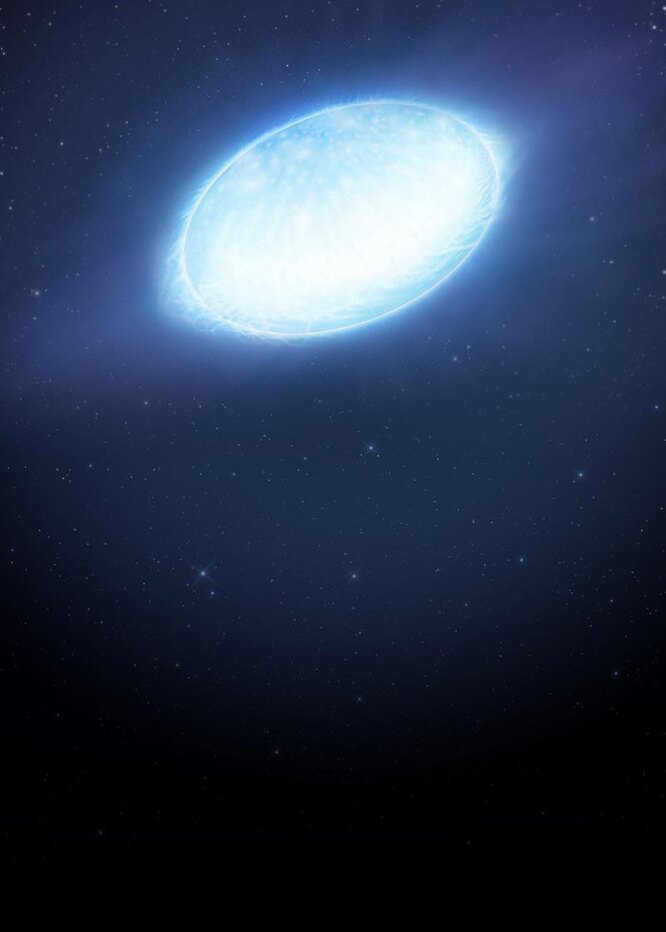
Most cataclysmic variables emit light and heat from both the central areas of their accretion disks and the region where the neck of the Roche cavity meets the outer edge of the disk. This specific area is known as the hot spot, and it earns its name for a good reason. Gas particles from the donor star collide with the matter in the accretion disk in this region, causing it to heat up significantly. Despite its smaller size, the hot spot can actually have a higher luminosity than the inner zones of the disk.
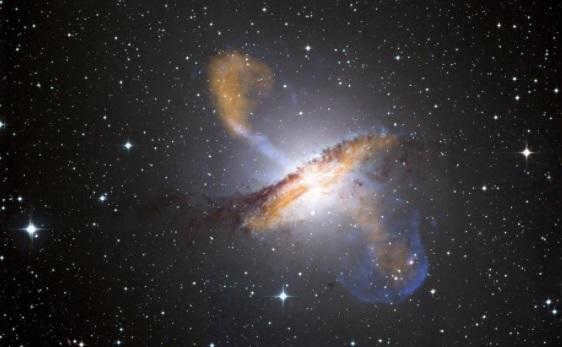

Accretion theory (also known as accretion) in the field of astrophysics provides an explanation for the formation of planets and other celestial bodies. According to this theory, these objects are created through the aggregation of small particles of dust that are drawn together by the force of gravity.
This concept was first proposed by Russian geophysicist Otto Schmidt (1891-1956) in 1944. Schmidt postulated that in the early stages of the solar system, a vast disk-shaped cloud composed of gas and dust surrounded the Sun.
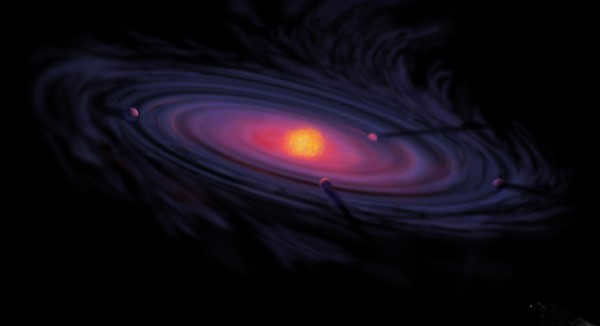
Figure 1: An artist’s interpretation of a protoplanetary disk from which planets formed through the process of accretion. Source: Wikimedia Commons.
Schmidt put forth the argument that the Sun acquired this cloud along with another star while traversing the galaxy, passing through a nebula that was rich in dust and gas. The proximity of the other star aided in the capture of matter by our Sun, which later condensed.
There are two categories of hypotheses regarding the formation of the solar system: evolutionary and catastrophic. The evolutionary hypothesis posits that both the Sun and the planets evolved through a single process and can be traced back to ideas proposed by Inmanuel Kant (1724-1804) and Pierre Simon de Laplace (1749-1827).
The second idea suggests that a major event, such as a collision or close encounter with another star, could have triggered the formation of planets. Originally, Schmidt’s hypothesis fell into this category.
Explanation
Today, we have observations of young star systems and enough computational power to run numerical simulations. This is why catastrophic theories have been abandoned in favor of evolutionary theories.
The currently most accepted hypothesis for the formation of the solar system is the nebular hypothesis, which considers accretion as the process by which planets form.
In the case of our solar system 4.5 billion years ago, tiny particles of cosmic dust, ranging in size from a few angstroms to 1 centimeter, were drawn together by gravitational attraction and formed a cloud around a central point.
In the most densely populated areas of the cloud, particles experienced more frequent collisions due to their close proximity and subsequently began to lose their kinetic energy.
As a result, the gravitational energy caused the cloud to collapse under its own gravitational force, giving birth to a protostar. Gravity continued to exert its influence, leading to the formation of a disk, from which the first rings and eventually the planets were formed.
Simultaneously, the Sun underwent compression at its core, and once it reached a critical mass, nuclear fusion reactions began to take place. These reactions provide the Sun and all other stars with the energy they need to sustain themselves.
Additionally, the Sun expelled high-energy particles in the form of solar wind, which helped to clear away any debris.
Planet Formation
Astronomers propose that following the birth of our stellar ruler, the dust and gas disk that encircled it persisted for a minimum of 100 million years, providing ample opportunity for the creation of planets.
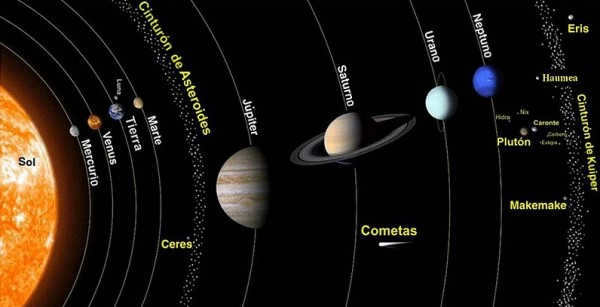
Figure 2: An illustration depicting the present-day configuration of the solar system. Source: Wikimedia Commons.
From our perspective, this era may seem like an eternity, but in the grand scheme of the universe, it is merely a fleeting moment.
During this epoch, planetesimals, which are larger objects measuring approximately 100 km in diameter, began to form. These planetesimals serve as the building blocks for future planets.
The intense radiation emitted by the newly formed Sun caused the gases and dust within the disk to evaporate rapidly, significantly accelerating the planet formation process. Meanwhile, the ongoing collisions continued to contribute to the growth of celestial bodies, as this is the essence of accretion.
Models of planetary formation
Scientists gain insight into the formation of our solar system by studying the formation of young stars. Initially, there was a challenge: these stars are not visible in the visible frequency range due to the presence of cosmic dust clouds surrounding them.
However, with the help of telescopes equipped with infrared sensors, it becomes possible to penetrate through the cosmic dust cloud. It has been demonstrated that stars are forming in the majority of nebulae in the Milky Way, along with the planets that accompany them.
After considering all the available data, three different models have been put forward to explain how planets form. The most widely accepted theory is known as the accretion model, which is well-suited for explaining the formation of rocky planets like Earth. However, it does not fully account for the formation of gas giants such as Jupiter and other outer planets.
The second model is a variation of the previous one. It proposes that rocks initially form and then come together through the force of gravity, which speeds up the process of planet formation.
Lastly, the third model is based on disk instability and provides the best explanation for the formation of gas giants.
The nuclear accretion concept and terrestrial planets
Following the emergence of the Sun, the remaining matter started aggregating together. This led to the formation of larger clusters, while lighter elements like helium and hydrogen were carried by the solar wind to regions further away from the core.
As a result, heavier elements and compounds such as metals and silicates could have given rise to rocky planets in close proximity to the Sun. Subsequently, the process of geochemical differentiation initiated, leading to the formation of distinct layers within the Earth.
Conversely, it is understood that the impact of the solar wind diminishes as the distance increases. At certain distances from the Sun, gases composed of light elements have the ability to accumulate. In these regions, lower temperatures promote the condensation of water and methane molecules, resulting in the formation of gaseous planets.
Astronomers have identified a region within the asteroid belt, known as the “ice line,” that separates Mars and Jupiter. Within this boundary, the frequency of collisions is lower, but the condensation rate is higher, leading to the formation of larger planetesimals.
Interestingly, this process of creating giant planets occurred more rapidly than the formation of rocky planets.
Accretion theory and exoplanets
Scientists have gained a strong confidence in the accretion model as the primary process of planet formation, thanks to the discovery of exoplanets and the wealth of information gathered about them.
This model is particularly effective in explaining the formation of rocky planets like Earth. However, it is worth noting that a significant number of exoplanets discovered so far are of the gaseous variety and are comparable in size to Jupiter or even larger.
Furthermore, observations have revealed that gaseous planets tend to be more prevalent around stars with heavier cores, while rocky formations are more commonly found around stars with lighter cores. Our own Sun, for instance, falls into the latter category.
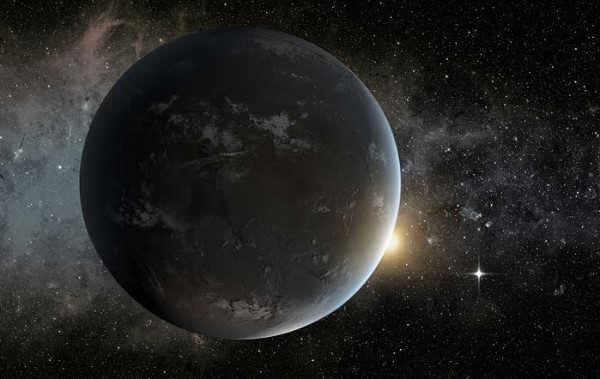
Figure 3. An artistic representation of exoplanet 62f orbiting its star in the constellation Lyra. Source: Wikimedia Commons.
However, it wasn’t until 2005 that scientists finally discovered a rocky exoplanet orbiting a star similar to our Sun. This discovery, along with others that followed, suggests that rocky planets are actually quite common.
In order to study exoplanets and how they form, the European Space Agency launched the CHEOPS (Characterizing ExOPlanets Satellite) in 2017. This satellite is equipped with a highly sensitive photometer that can measure the light emitted by other star systems.
When a planet passes in front of its star, the amount of light that reaches us decreases. By analyzing this change in brightness, scientists can determine the size of the planet and whether it is a gas giant like Jupiter or a rocky planet like Earth or Mars.
By studying young systems, we can gain insights into the process of planetary formation and how accretion takes place.
References
- Land. Cheops: A Spanish satellite dedicated to exoplanet measurement. Retrieved from: elpais.com.
- Planet Hunters. Exploring the true nature of planet formation. Retrieved from: blog.planethunters.org.
- Sergeev A. Rising from the ashes. Retrieved from: vokrugsveta.ru.
- The formation of the solar system. Chapter 8. Retrieved from: asp.colorado.edu.
- Taylor N. Unraveling the mysteries of solar system formation. Retrieved from: space.com.
- Wolfson M. Investigating the origin and evolution of the solar system. Retrieved from: acade.oup.com.
Accretion refers to the process of matter falling onto a star, galaxy, or other celestial body from the surrounding space. It is the opposite of the expulsion of matter. Accretion occurs at both the beginning and end of a star’s evolution. During the formation of a star, a small core with a mass of approximately 0.01 times the initial mass of the cloud is first formed in hydrostatic equilibrium. This core then undergoes accretion of matter from the surrounding envelope, leading to the formation of a star with a larger mass. After the accretion stage, there is an outflow of matter that continues throughout the star’s life and prevents further accretion. In the final stages of evolution, the star may transform into a white dwarf, a neutron star, or a black hole, and accretion onto these objects can result in various observable phenomena.
In tight binary star systems, when the larger star transitions into the giant phase, it undergoes a significant loss of mass, while its companion star can experience a substantial increase in mass over a span of a few thousand years. This process of mass transfer is commonly referred to as overflow. In close binary systems, this transfer of mass is typically more intense compared to single stars.
During the process of overflow, gravitational energy is released, which is then converted into heat and eventually emitted as radiation. As the matter falls onto the star, its velocity and temperature increase. The specific pattern of matter accretion onto a star depends on various factors, such as the relative velocity of the star with respect to the surrounding gas, the momentum of the incoming gas, and the presence of an organized magnetic field in the ionized gas surrounding the star. These factors contribute to the classification of four main types of accretion.
Spherical symmetric accretion of gas without a regular magnetic field and with low momentum onto a stationary star follows the laws of mass conservation and Bernoulli equation. The equations that describe this process have a special point where subsonic flow transitions to supersonic flow. The velocity of the accretion curve ACK increases gradually as the gas moves toward the center. The presence of a chaotic small-scale magnetic field does not disrupt the spherical symmetry, but it can greatly enhance the energy release efficiency by converting kinetic energy into magnetic energy and then into thermal energy through the annihilation of the magnetic field and subsequent synchrotron radiation. In the case of accretion onto a black hole with a magnetic field, the luminosity reaches 0.3 Ms^2 (compared to 10^-8 Mc^2 without a magnetic field).
When the star moves rapidly through the substance at supersonic speeds, the substance surrounds the star and creates a cone-shaped shockwave behind it. This shockwave is where the process of accretion takes place (Figure 2).
When matter falls onto a white dwarf, neutron star, or black hole from a companion normal star in a double system, it can gain a significant amount of momentum. As the matter continues to fall, its velocity increases, and the centrifugal force starts to counteract gravity. Eventually, the matter cools down and forms a thin accretion disk that rotates. Each layer of the disk rotates at a velocity close to Keplerian velocity. Friction between the layers of the disk causes a loss of momentum and a gradual movement of the gas towards the center (see Fig. 4). In the latter two cases, energy is lost in the form of radiation emitted from the surface of the optically thick accretion disks.
The actual pattern of accretion can be a combination of different types. For instance, if the matter has an embedded magnetic field, it may possess a high rotational momentum or fall onto a star that is already in motion.
When gas falls onto a black hole with no surface, the only place where gravitational energy is released is the accretion disk. In the case of accretion onto a white dwarf or neutron star, more than half of the gravitational energy is released near the star’s surface. If the star lacks a magnetic field, its surface is heated either by the energy released in the shock wave from the collision of the incident flux with the surface or in the thin boundary layer between the accretion disk and the slowly rotating star. Accretion becomes more complex when the star has a strong magnetic field. Let’s consider a star with a radius and a dipole magnetic field , where the energy density near the surface is much higher than the kinetic energy density . The magnetic energy density far from the star is always small, but it grows much faster than the kinetic energy density as the radius decreases. When it reaches a certain level , the magnetic field stops the free fall of matter. This stopping radius is known as the Alvenov radius: . Once matter reaches this radius, it flows along the magnetic field lines and reaches the star’s surface near the magnetic poles. The magnetic poles appear to be significantly hotter than the rest of the star’s surface. If the radiation in their vicinity is not evenly distributed and the neutron star rotates around an axis that is not aligned with the magnetic axis, then the X-ray pulsar phenomenon is observed, especially in double systems with strong accretion. For the falling matter to reach the magnetic poles, it must penetrate into the magnetosphere, which happens due to the development of hydromagnetic instabilities such as the Rayleigh-Taylor instability (see Plasma Instabilities).
The interaction between the radiation flux emitted by the accreting gas and the descending matter flow leads to a decrease in the velocity of the latter. Once the radiation force becomes comparable to the gravitational force, the accretion flow undergoes a sudden reorganization: its descending velocity decreases and its density increases. The luminosity, which corresponds to the point of equality between these forces, is known as the Eddington luminosity, measured in erg/s. Here, represents the opacity of the substance in cm^2/g. In the presence of high densities of the surrounding gas, it is possible for the accretion process to occur in a settling manner, with the gas moving slowly and subsonically towards the center. This type of accretion can occur in the case of a neutron star located at the center of a normal star, which can arise from the evolution of a close binary system.
When it comes to black holes that don’t have a surface that emits radiation, their primary way of being observed is through accretion radiation. The immense gravitational potential on the surface of a neutron star results in the release of energy when accretion occurs, reaching up to 0.2 Ms 2 – erg/s. Neutron stars, along with potentially black holes in the accretion state, are the most intense sources of X-ray emissions in the Milky Way, with luminosities reaching as high as 10 38 erg/s.
Accretion on white dwarfs has significant consequences. The surface layers can have a different chemical composition compared to the inner regions due to this process. As the mass of the hydrogen-helium layer on the white dwarf’s surface increases, it becomes unstable for nuclear combustion. This instability leads to a thermal flash and the birth of a new star. Similarly, thermonuclear explosions in the surface layer of a neutron star can account for the presence of X-ray sources that flare up.
The presence of powerful non-thermal radiation and emissions from active galactic nuclei and quasars can be explained by the model of matter accretion onto a supermassive black hole. This model assumes the presence of an ordered magnetic field and a large amount of rotational momentum.
1. Defining the Concepts
The term “accretion” is utilized in various scientific fields such as physics, geology, and finance. Its general meaning is the act of adding or increasing.
Astronomers, however, have a more specific definition for this concept: it refers to the increase in the mass of a celestial body caused by gravitational force. This occurs through a process known as gravitational capture, where matter falls onto a massive object.
The phenomenon of accretion can be observed in numerous locations, including the solar system, around other stars, and both inside and outside of galaxies.
It is important not to mistake this process for the simple collision of two objects. For instance, when a meteorite crashes into our planet, it is not considered an example of accretion. There must be a gravitational influence involved, with the object being attracted by gravity. Jupiter is capable of exerting such influence, whereas Earth lacks the necessary mass to significantly alter the trajectory of asteroids.
2. The formation of the stellar system
The stellar system, similar to the solar system, came into existence through the process of accretion.
As we observe the cosmic realm, we understand that motion is a fundamental characteristic of everything present. There are no celestial bodies that remain stationary. Therefore, when a star is born, the surrounding gas cloud starts to rotate. The central region of this cloud undergoes a transformation and becomes a star, while matter continues to accrete onto it.
Once the star is formed, the stellar wind exerts pressure on the remaining gas, causing it to disperse. However, the remaining matter does not simply dissipate. Instead, it forms an accretion disk encircling the star. The rotational force of this disk prevents it from collapsing entirely onto the central object. This phenomenon is similar to the reason why the Moon orbits the Earth and the Earth revolves around the Sun without falling into them.
Within this accretion disk, the process of accretion once again becomes significant. Microdust particles within the disk adhere to one another, gradually forming larger blocks of rock, some of which can reach sizes of 1 km or more. These rock formations serve as the foundation for the future planets within the stellar system.
This implies that the origin of life on our planet is attributed to the phenomenon of accretion. Without it, Earth would not have existed.
3. Extraordinary Manifestations
Black holes, familiar to physicists and astronomers, can also demonstrate accretion. The immense gravitational force attracts surrounding matter, causing it to fall onto the black hole.
Due to rotational motion, this process does not occur instantaneously. Instead, an accretion disk is formed, in which matter is accelerated and heated, ultimately forming jets. Quasars, commonly observed at the centers of distant galaxies, are a direct outcome of this process.
In addition, many are familiar with the phenomena of novae and supernovae. Accretion plays a significant role in their occurrences. It is quite common for stars to form in pairs, and the more massive star evolves at a faster rate, eventually becoming a white dwarf or neutron star.
The immense gravitational pull of these celestial bodies can draw in nearby matter. When a critical mass of material accumulates, these bodies explode, giving birth to a new star or a supernova in the night sky.
4. Universal scales
Accretion also occurs on a galactic scale. In fact, galaxies are formed and grow through this very process. They first capture individual stars and then smaller neighboring galaxies, gradually increasing in size.
This process of accretion can also be observed in clusters and superclusters of galaxies. In our models of the Universe, we can see matter flowing along filaments towards the nodes that represent these superclusters.
It is evident that accretion takes place on various scales, ranging from planets to galaxy super clusters. The formation of these structures is attributed to the force of gravity. Accretion serves as a mechanism for the birth of new planets and stars, but can also lead to their demise if it surpasses a certain threshold.
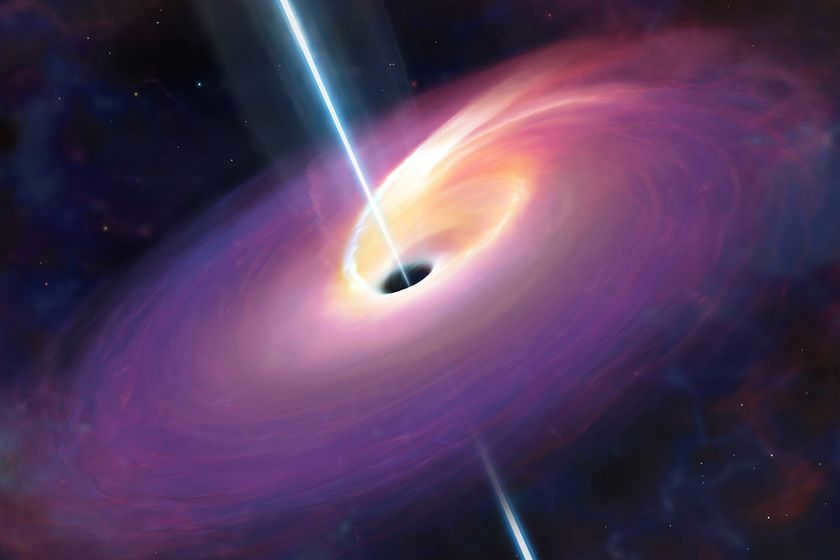
The formation of planets occurs through the process known as accretion.
Explanation:
Accretion refers to the phenomenon where dust particles in outer space clump together, gradually forming small rocks. These small rocks, in turn, merge to create larger rocks, which eventually develop into asteroids, planetoids, and ultimately, planets.

What exactly are shock waves in the field of astronomy?
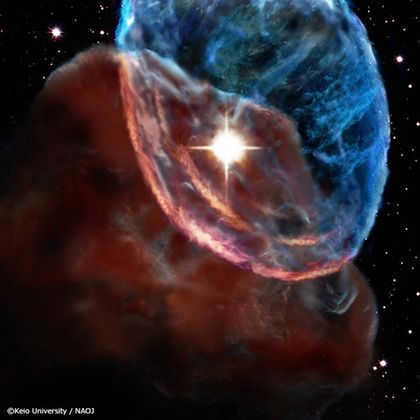
Shock waves in astronomy are defined as intense pressure waves that result in abrupt alterations in pressure, temperature, or other surrounding conditions. More specifically, in the realm of astronomy, shock waves are characterized as potent pressure waves capable of initiating explosive events and the creation of stars, as well as compressing interstellar clouds.
Accretion: The Formation of Earth
Accretion is a process that played a pivotal role in the formation of our planet, Earth. But what exactly is accretion, and how did it contribute to the creation of our home?
Accretion refers to the gradual accumulation of matter through gravitational attraction. In the case of Earth, accretion began around 4.6 billion years ago when our solar system was still in its infancy. At that time, a massive cloud of gas and dust, known as the solar nebula, existed in space.
Over time, the particles within the solar nebula began to collide and stick together, forming larger and larger objects. These objects, called planetesimals, eventually grew to be several kilometers in size. The force of gravity caused these planetesimals to attract more and more matter, leading to a continuous growth process.
As the planetesimals grew in size, they eventually became protoplanets. These protoplanets continued to attract more material from the surrounding nebula until they reached a critical mass. Once a protoplanet reached this critical mass, its gravity became strong enough to attract even more matter, including gas and dust, from the surrounding space.
Through this process of accretion, the Earth gradually formed. The planetesimals and protoplanets that collided and merged eventually created a spherical body with a molten core. Over time, this molten core solidified, forming the Earth as we know it today.
Accretion not only played a vital role in the formation of Earth but also contributed to the creation of other celestial bodies in our solar system, including the other planets, moons, and asteroids. By understanding the process of accretion, scientists can gain insights into the origins of our universe and the various objects within it.
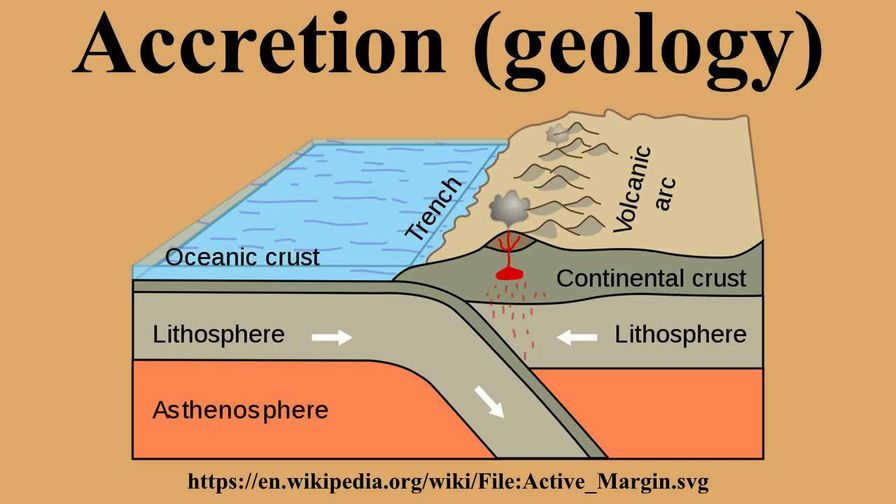
When particles combine to create significant objects. Accretion is the process in which matter gathers and sticks together due to the force of gravity, resulting in the formation of large celestial bodies. Once the Sun was born, the remaining gas, rocks, ice, and various substances in its orbit started to accumulate gradually. This accumulation process, known as accretion, caused an increase in gravitational pull, leading to the creation of more massive celestial bodies. The Earth is one such body that emerged as a result of this process.
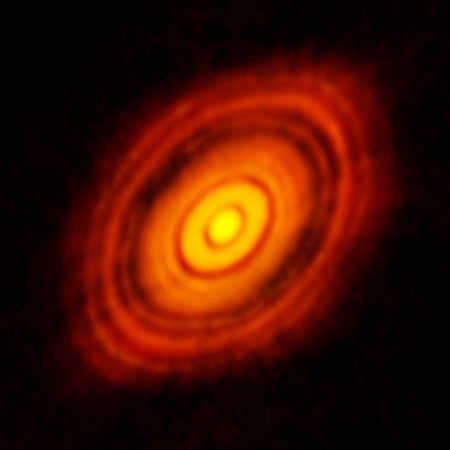
The process of accretion in astrophysics involves the gravitational attraction of particles, typically gaseous matter, into an accretion disk, resulting in the accumulation of matter in a massive object. This phenomenon is responsible for the formation of various astronomical objects, including galaxies, stars, and planets.
Summary
In 1944, Otto Schmidt proposed the idea that Earth and other planets in the Earth group were formed from meteoric material. This was followed by William McCree’s protoplanet theory in 1960 and Michael Wolfson’s capture theory. However, none of these models were entirely successful. In 1978, Andrew Prentice revived the original Laplacian ideas on planet formation and developed the modern Laplacian theory. Despite these advancements, many of the proposed theories remain descriptive in nature.
The 1944 accretion model by Otto Schmidt was subsequently quantitatively expanded upon in 1969 by Victor Safronov. [4] Safronov conducted a detailed calculation of the various stages involved in the formation of the Earth-group planets. [5] [6] Since then, the model has undergone further development through intensive numerical simulations aimed at studying planetesimal accretion. It is now widely accepted that stars are created through the gravitational collapse of interstellar gas. Prior to this collapse, the gas primarily exists in the form of molecular clouds, such as the Orion Nebula. As the cloud collapses and loses potential energy, it undergoes heating and gains kinetic energy. The retention of angular momentum ensures that the cloud takes on a flattened disk shape – an accretion disk.
Galaxy Accretion
Several hundred thousand years after the occurrence of the Big Bang, the Universe reached a state of cooling that allowed for the formation of atoms. As the expansion and cooling of the Universe continued, atoms gradually lost kinetic energy and dark matter merged, resulting in the formation of protogalaxies. With further accretion, these protogalaxies eventually evolved into fully-fledged galaxies. [7] There is widespread indirect evidence supporting this process. [7] Galaxies experience mergers and undergo smooth accretion of gas. Additionally, accretion also takes place within galaxies, leading to the formation of stars.
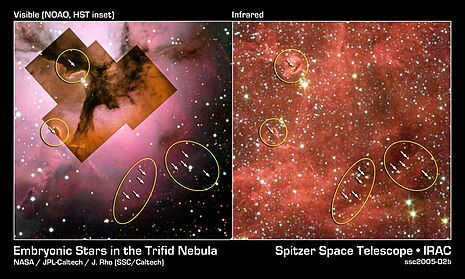
Two different images, one showing visible light on the left and the other showing infrared light on the right, depict the Triple Nebula. This massive cloud of gas and dust is situated in the Sagittarius constellation, approximately 5,400 light-years away or 1,700 parsecs.
Stars are thought to originate within massive clouds of cold molecular hydrogen, known as giant molecular clouds. These clouds can reach sizes of about 300,000 times the mass of our Sun and span 65 light-years (20 parsecs) in diameter. Over the course of millions of years, these giant molecular clouds undergo a process of collapse and fragmentation. As a result, small, dense nuclei begin to form, which eventually give rise to stars. These nuclei, known as protostellar (or protosolar) nebulae, typically have masses ranging from a fraction to a few times that of our Sun. They have diameters of 2,000-20,000 astronomical units (0.01-0.1 parsecs) and a particle number density of about 10,000 to 100,000 per cubic centimeter (160,000 to 1,600,000 per cubic inch). To put this into perspective, the particle density of air at sea level is approximately 2.8 x 10^19 per cubic centimeter (4.6 x 10^20 per cubic inch).
The initial collapse of a nebula in the process of becoming a star typically takes around 100,000 years. [8] [9] Each nebula possesses a certain amount of angular momentum from the start. The gas located in the central region of the nebula, which has relatively less angular momentum, undergoes rapid compression, resulting in the formation of a hot hydrostatic (non-shrinking) core that contains only a small fraction of the original nebula’s mass. This core serves as the foundation for the future star. [8] As the collapse progresses, the conservation of angular momentum causes an increase in the rotation speed of the collapsing shell, ultimately leading to the formation of a disk.
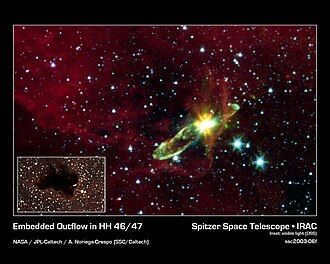
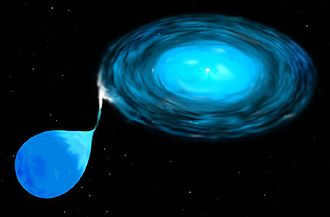
During the expansion phase of a double system, when a lower-mass star undergoes expansion, its outer atmosphere has the potential to collapse onto the compact star, resulting in the formation of an accretion disk.
Planetary Accretion
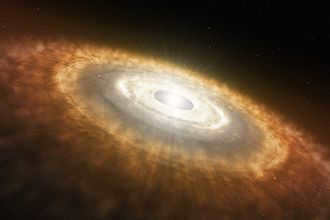
The process of self-accumulation of cosmic dust leads to the acceleration of particle growth, resulting in the formation of planetesimals or boulders. These planetesimals, which are larger in size, have the ability to attract and accumulate smaller ones, while some may collapse upon collision. Accretion disks are commonly found around smaller stars or remnants of stars in a close binary system, or around black holes in the center of a galaxy. In order for the gas in the disk to lose angular momentum and fall onto the central massive object, certain dynamics, such as dynamical friction, play a crucial role. This process can sometimes lead to the fusion of the star’s surface, a phenomenon known as Bondi accretion.
When considering the formation of Earth-like planets or planetary cores, there are several steps to be taken into account. Initially, the collision of gas and dust particles results in the formation of micrometer-sized particles through processes such as van der Waals forces and electromagnetic forces, where the accumulation mechanisms are primarily non-gravitational. [19] However, the process of forming planetesimals in the centimeter to meter range is not well understood, and there is no convincing explanation as to why these grains would accumulate instead of simply bouncing off. [19]: 341 Particularly, the growth of these objects into planetesimals of 0.1-1 km (0.06-0.6 mi) in size remains unclear; [5] [20] this challenge is known as the “meter-size barrier”: [21] [22] As the dust particles grow through coagulation, they gain higher relative velocities to other particles in their vicinity, as well as a systematic internal drift velocity, which leads to destructive collisions and ultimately limits the growth of aggregates to a maximum size. [23] Ward (1996) suggests that the very low but non-zero gravity of the colliding grains prevents them from flying away when they collide at slow speeds. [19]: 341 Grain fragmentation is also believed to play a vital role in replenishing small grains and maintaining the thickness of the disk, as well as sustaining a relatively high content of solids of all sizes. [23]
Over time, the grains come together to create planetesimals, which can be as large as mountains or even bigger. Through collisions and the force of gravity, these planetesimals develop into embryonic planets the size of moons within a period of 0.1-1 million years. Eventually, these embryonic planets collide with each other, forming fully-fledged planets within a time frame of 10-100 million years. The planetesimals are sufficiently massive that their gravitational interactions have a notable impact on their evolution. The growth of these embryonic planets is aided by the gas drag that causes smaller bodies to lose orbital energy and prevents them from becoming trapped between the orbits of the embryos. Further collisions and clustering result in the formation of Earth-like planets or the cores of giant planets.
If planetesimals were created through the gravitational collapse of specific clusters of pebbles, their development into planetary embryos and the cores of massive planets is primarily influenced by additional clusters of pebbles. The accumulation of pebbles is facilitated by the drag of gas, which objects experience as they move closer to a large celestial body. The resistance from gas causes pebbles to slow down below the escape velocity of the massive body, resulting in their spiral movement and eventual accumulation on it. The process of pebble accretion can significantly expedite the formation of planets by a factor of 1000 compared to the accretion of planetesimals, allowing giant planets to form before the gas disk dissipates. [28] [29] However, the growth of cores through pebble accretion appears to be inconsistent with the final masses and compositions of Uranus and Neptune. [30]
Formation of Earth-like planets is distinct from the formation of giant gas planets, also known as Giant Planets. Earth-group planets are made up of metal and rock particles that have condensed within the Solar System. In contrast, giant planets originated as icy planetesimals that captured hydrogen and helium gas from the solar nebula. The distinction between these two types of planetesimals is determined by the frost line in the solar nebula.[31][32]
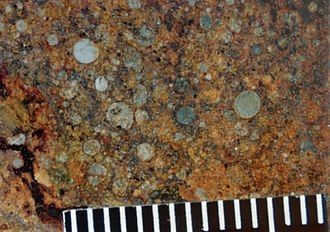
Meteorites contain information about the process of accretion and impacts during the formation and development of asteroids, but there is still much to learn about how asteroids grow. [33] Evidence suggests that the growth of large asteroids may be the result of the accumulation of chondrules, which are small spherical particles that form as molten or partially molten blobs in space and then merge with their parent asteroids. [33] In the inner part of the Solar System, it appears that chondrules played a crucial role in initiating the accretion process. [34] The relatively small size of asteroids may be due in part to the inefficient formation of chondrules beyond a certain distance from the Sun, or to the less efficient delivery of chondrules from the protostar. [34] Furthermore, collisions have influenced the formation and destruction of asteroids and are believed to be a significant factor in their geological evolution. [34]
Chondrons, metal grains, and other elements most likely originated in the solar nebula and came together to create parent asteroids. Over time, some of these asteroids underwent melting, resulting in the formation of metallic cores and mantles rich in olivine. Others experienced alteration due to the presence of water. Following the cooling of these asteroids, they underwent a process of collision erosion throughout their 4.5 billion-year existence or collapsed altogether.
In order for accretion to take place, impact velocities need to be approximately half the escape velocity, which is around 140RS (460 ft/s) for an asteroid with a radius of 100 km (60 mi). [34] Conventional models propose that micrometer-sized dust particles adhere to each other and settle on the midplane of the nebula, forming a dense layer of dust that eventually transforms into a disk of planetesimals several kilometers in size due to gravitational forces. However, there are several arguments [which?] that suggest asteroids may not have undergone accretion in this manner. [34]
Formation process of comets
Arrocot, a Kuiper Belt object believed to be the primordial planetesimals that gave rise to the formation of planets, has a designation of 486958.

The increase in value of a bond following a discounted purchase is referred to as accretion.
What is accretion?
Accretion is a financial term used to describe the growth in value of a bond after it has been acquired at a price lower than its face value and held until its maturity date. A bond is considered to have been acquired at a discount if the purchase price is below its face value. As the maturity date approaches, the bond’s value will gradually increase until it reaches its face value at maturity. The gradual increase in the bond’s value over time is known as accretion.
On the other hand, if a bond is purchased at a price higher than its face value, it is said to have been acquired at a premium. As the maturity date draws near, the bond’s value will decrease until it reaches its face value at maturity. The gradual decrease in the bond’s value over time is referred to as premium amortization.
Accretion in acquisitions refers to the increase in earnings and assets following a specific transaction, like a merger or acquisition. If the price-to-earnings ratio of the acquiring company is higher than that of the target company, the deal is considered to be accretive to earnings. The acquiring company aims to acquire a target company with a low price-earnings ratio in order to boost the earnings per share (EPS) of the combined company post-acquisition and subsequently increase its stock price.
Bond appreciation
Bond appreciation refers to the gradual increase in the worth of a bond over time. As the bond nears its maturity date, its value rises until it ultimately equals the face value, which is the amount paid to the bondholder. To illustrate, consider a bond with a face value of $1,000 that is initially sold at a discounted price of $950. This implies that the current value of the bond is $950, with a discount of $50 ($1,000 – $950). As time passes, the bond’s value will steadily rise until it reaches its face value of $1,000.

Techniques for recording bond amortization
Two primary techniques for recording bond amortization are the straight-line approach and the constant yield approach.
Using the straight-line method, the appreciation of a bond is distributed evenly over the duration of the bond. For instance, if the bond’s term is 5 years and the company publishes its financial results on a quarterly basis, this implies that there are 20 fiscal periods remaining until the bond matures.
The $500 discount is divided by 20 periods, resulting in $25 per quarter. As a result, $25 will be accumulated in each period until maturity. This will increment the bond’s liability balance by $25 in each period until maturity.
2. Constant Yield
When employing the constant yield approach, the rise in the bond’s value is most pronounced as the maturity date approaches. Unlike the linear method, the increase is not uniform, with certain periods experiencing a greater increase than others. The gains are concentrated in the final phase of the bond’s lifespan.
When utilizing the constant yield method, the initial step involves determining the yield to maturity (YTM). The YTM represents the income that the bond will generate until its maturity date. To calculate the yield using a spreadsheet or calculator, the bond’s face value, price, years to maturity, and the interest rate on the bond are required inputs.
Acquisition
Increasing synergies is one of the main objectives when acquiring and merging another business with your existing one. The resulting combined business holds more value than the simple sum of the two separate businesses. The merged company benefits from lower costs, economies of scale, and higher revenues.
By combining the EBITDA/profit ratio of the smaller business with that of the larger business, the acquirer achieves acquisition accretion. This is advantageous for companies as it enhances shareholder value.
Example of acquiring a company
Let’s say Company ABC wants to acquire Company XYZ in order to increase its earnings per share. Last year, ABC Company reported a net income of $200,000 and has 1,000,000 shares outstanding. On the other hand, XYZ Company reported a net income of $100,000 and sold 200,000 new shares to raise cash for purchasing outstanding shares. We can use this information to calculate the accretion of the acquisition for the combined company.
EPS = 200,000/1,000,000 = $0.20
EPS of the combined company:
= (200,000+100,000)/(1,000,000+200,000) = 300,000/1,200,000 = $0.25
The EPS of the combined company ($0.25) is $0.05 higher than ABC’s original EPS ($0.20). This indicates that the accretion on the transaction is $0.05.
The Finansistem portal offers valuable resources to help individuals enhance their financial analysis skills. In addition to the portal, the following resources can further contribute to your professional growth:
Pancreatic Accretion Theory was proposed by Soviet geophysicist and astronomer Otto Schmidt in 1944. This theory explains the formation of stars, planets, galaxies, asteroids, and comets. According to Schmidt, accretion is a process by which the mass of a celestial body increases through the accumulation of gas or small solids that collide and stick to the body (Ridpath, 1998, p. 10).
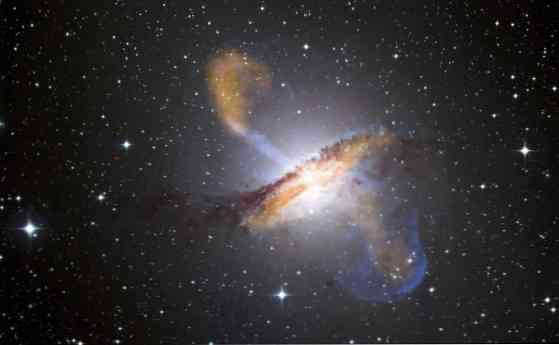
In simpler terms, planets formed gradually over millions of years as gas cloud particles and dust from planetary nebulae stuck together to create a disk of material.
The combination of these particles is not a peaceful process, but rather a violent one, as the gravity of larger matter speeds up the attraction of smaller rocks (or stardust), resulting in strong collisions.
It is believed that stars, planets, satellites, and even galaxies in the solar system formed in this manner (Ridpath, 1998, p.10). Some stars continue to form through an accretion disk.
This relatively new theory aligns with older models and theories, such as Descartes’ Nebular Theory in 1644 and the more developed ideas of Kant and Laplace in 1796.
Overview of the theory of planetary accretion
The theory of planetary accretion is based on the heliocentric model, which states that the planets orbit around the Sun. This heliocentric model was initially suggested by Aristarchus of Samos (280 BC), but his idea was not widely accepted and was overshadowed by Aristotle’s belief in a stationary Earth with the Sun at the center of the universe (Luque, et al., 2009, p. 130), which remained dominant for 2000 years.
During the Renaissance, Nicholas de Cusa challenged the ideas of Aristarchus of Samos, but his views did not gain recognition in the scientific community of that time.
Finally, Nicolaus Copernicus proposed the concept of a planetary system revolving around the Sun, which initially faced resistance but was later supported by Galileo and Kepler.
It is worth noting that the question of the origins of the planets and the Sun was not previously addressed by the scientific community until the start of the Copernican revolution (Luque et al., 2009, p. 132)….
During the early 17th century, Descartes introduced the concept of the nebular theory, which posits that planetary bodies and the Sun formed simultaneously from a cloud of stardust.
In the 18th century, Newton’s advancements in mechanics, particularly his study of motion and the behavior of solid particles in elliptical paths, paved the way for Emanuel Swedenborg to propose the nebular hypothesis as an explanation for the formation of the solar system in 1721.
Swedenborg believed that a large nebula was responsible for the formation of our solar system. According to his theory, the material in this nebula would have concentrated to create the Sun, which would then attract and revolve around it high-velocity stardust. Over time, this stardust would condense and form the planets.
In 1775, Kant, who was familiar with Swedenborg’s theory, put forth a similar idea. He proposed that a primitive nebula was the origin of the Sun and its system of planets (Luque, and others, 2009).
Pierre Simon de Laplace further developed this concept analytically. He concluded that the nebula would have collapsed into a disk due to its own gravity, causing its rotational velocity to increase. Eventually, gas rings would have formed within this disk and condensed to create the planets (Luque, and others, 2009).
Objections to the theory started emerging in the late 19th century. James Clerk Maxwell put forward one such objection, which contrasted with Laplace’s concept of a ring of small planets that merged to form larger ones….
The formation of our solar system commenced around 4658 million years ago, with the planets beginning to take shape approximately 4550 million years ago (Luque et al., 2009, p. 152). The Sun, the solitary and core star of the solar system, was the first celestial body to form….
Formation of Stars through Accretion
Following a supernova explosion, clouds composed of gas and stardust rapidly expand, with the resulting shock wave potentially triggering the collapse of a neighboring giant molecular cloud….
If the density of the cloud reaches a point where the gravitational force surpasses the gas expansion, the cloud will begin to contract (Jakosky, 1998, p. 247).
From a larger cloud, smaller clouds can emerge and undergo a gradual, independent process of contraction until one or more stars are born….
In the context of our solar system, the matter within the star became concentrated at the core, leading to an increase in pressure that eventually released energy and formed the protostar approximately 5 billion years ago, which later evolved into the Sun (Ridpath, 1998, p. 589).
Formation of planets through accretion
A rotating nebula containing hot gaseous disks undergoes a contraction process as it loses energy through radiation. This contraction causes an increase in rotational velocity, allowing the nebula to maintain its angular momentum.
During the contraction, a point is reached where the velocity of the outer ring of the disk surpasses the gravitational attraction towards the center, thanks to the “centrifugal force” (Gass, Smith, & Wilson, 1980, p. 57). This outer ring is known as the accretion disk, which eventually gives rise to planets.
Accretion disks refer to rings of matter that encircle a compact object, formed due to the gravitational pull of a nearby star’s atmosphere (Martinez Troia, 2008, p. 143).
Within the vast array of gases, substances, and celestial materials that revolve around a complex entity, we find the fascinating planetesimals.
Planetesimals are comprised of rocky bodies and/or helium, boasting diameters ranging from 0.1-100 km (Ridpath, 1998, p. 568). Through the accretion of numerous planetesimals and the successive collisions of rocks of varying sizes, protoplanets or planetary embryos gradually take shape, eventually giving rise to planets (whether major or minor) over an extended period of time.
It is believed that comets are the icy remnants of planetesimals that were formed during the creation of the outer planets (Ridpath, 1998, p. 145)….
References
- Gass, I.G., Smith, P.J., & Wilson, R.C. (1980). Chapter 3: Earth’s Composition. In I. G. G. Gass, P. J. Smith, & R. C. Wilson, Introduction to Geosciences (pp. 45-62). Seville: Reverte.
- Jakoski, B. (1998). 14. Planet Formation Around Stars. In B. Jakoski, The Quest for Extraterrestrial Life (pp. 242-258). Madrid: Cambridge University Press.
- Luque, B., Ballesteros, F., Marquez, A., Gonzalez, M., Agea, A., and Lara, L. (2009). Chapter 6. The Origin of Our Solar System. In B. Luque, F. Ballesteros, F. Ballesteros, A. Marquez, M. Gonzalez, A. Agea, and L. Lara (Eds.), Astrobiology: Bridging the Gap between the Unknown and Life (pp. 129-150). Madrid: Acal.

